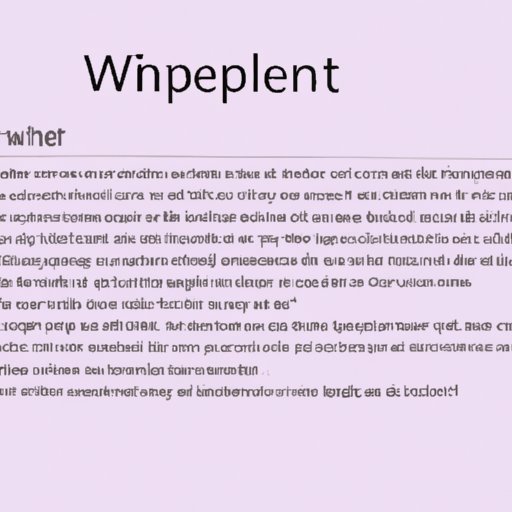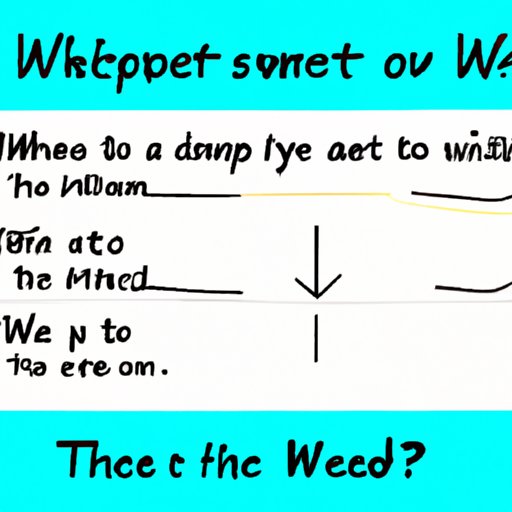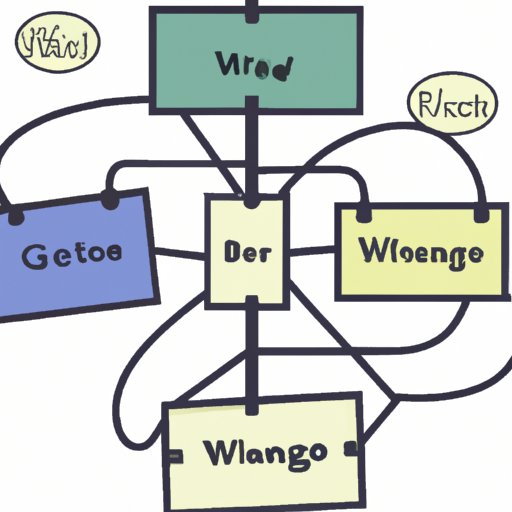Introduction
Webbing in writing is a technique used to organize ideas and create a structure for written work. It is often used for brainstorming, outlining, and creating graphic organizers. Webbing can be a powerful tool for writers, as it helps them to improve their organization and clarity, and makes it easier to flow from one idea to the next.

Exploring the Benefits of Webbing in Writing
Webbing can be an effective way to improve organization in writing. By creating a web of related ideas, writers can see how each idea is connected to the other and how they all fit together to form a cohesive structure. This can help writers make sure their writing is well-structured and organized.
In addition to improved organization, webbing can also help writers to have an easier flow of ideas. As writers connect related ideas together, they can easily move from one idea to the next without losing track of where they are in their writing. This can make it easier for writers to write more quickly and with greater confidence.
Finally, webbing can help writers to increase clarity in their writing. By creating a visual representation of their ideas, writers can better understand the structure of their work and make sure that each part of their writing is clear and understandable. This can help writers ensure that their writing is easy to follow and comprehend.

Examples of How to Use Webbing in Writing
There are several ways that writers can use webbing in their writing. One of the most common ways is through brainstorming. Brainstorming is a great way to generate ideas and get the creative juices flowing. When brainstorming, writers can start by writing down a central idea in the middle of a page, then connecting related ideas to it. This can help writers come up with new ideas and figure out how they all fit together.
Another way to use webbing in writing is through outlining. Outlining is a great way to plan out a piece of writing before actually starting to write. Writers can start with a main idea in the center of the page and then create branches that connect to other related ideas. This can help writers figure out what they want to say and the best way to say it.
Finally, webbing can also be used to create graphic organizers. Graphic organizers are visual representations of information that can help writers organize their thoughts and ideas. They can be used to create diagrams, charts, and other visuals that can help writers better understand their writing and make it easier for readers to follow.

Tips for Using Webbing in Writing
When using webbing in writing, there are a few tips that can help writers be successful. First, it’s important to start with an idea. This can be a central theme or topic that will be the focus of the writing. Once this idea has been identified, it can be used as the starting point for creating the web of related ideas.
Next, it’s important to connect related ideas together. As writers create the web, they should think about how each idea is connected to another and how they all fit together to form a cohesive structure. This can help writers create a stronger and more organized piece of writing.
Finally, it’s important to be flexible when webbing in writing. Writers should not be afraid to change things around and move ideas around if they feel like it would improve the structure of their writing. This can help writers make sure their writing is the best it can be.
Common Mistakes to Avoid When Webbing in Writing
When webbing in writing, there are a few common mistakes that writers should avoid. The first mistake is overcomplicating the web. Writers should try to keep their webs simple and should only include the most relevant ideas and connections. This can help writers stay focused and make sure their writing is clear and concise.
Another mistake to avoid is not considering context. Writers should take into account who their audience is and what the purpose of their writing is when creating their webs. This can help writers make sure their writing is tailored to their audience and that it is conveying the right message.
Finally, writers should also avoid ignoring grammar rules. While webbing can be a helpful tool for organizing ideas, writers should still make sure that their writing is grammatically correct. This can help writers ensure that their writing is professional and of the highest quality.
Conclusion
Webbing in writing is a powerful tool for writers. It can help them improve their organization, increase clarity, and make it easier to flow from one idea to the next. By exploring the benefits of webbing and following some simple tips, writers can use this technique to create well-structured and effective pieces of writing.
In conclusion, webbing in writing can be a great way to organize ideas and create a structure for written work. By understanding the benefits of webbing and following some simple tips, writers can use this technique to create clear and effective pieces of writing.
(Note: Is this article not meeting your expectations? Do you have knowledge or insights to share? Unlock new opportunities and expand your reach by joining our authors team. Click Registration to join us and share your expertise with our readers.)
